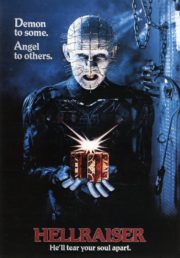Gory Ambitions: Entering the Twisted Mind of The Human Centipede 3
*”We have to make the centipede longer; we just need more prisoners!”* – This chilling line from “The Human Centipede 3 (Final Sequence)” echoes throughout the film and encapsulates its grotesque premise. Directed by Tom Six and released in 2015, this third installment of the infamous “Human Centipede” franchise takes the disturbing concept of body horror to harrowing new levels. The film follows the sadistic warden of a high-security prison, Bill Boss, played by Dieter Laser, and his assistant, who takes macabre inspiration from the previous films. It’s a journey into depravity where the most feared inmates of the prison become part of an elaborate and nightmarish scheme, resulting in one of the most controversial horror films in recent history.
Building a Nightmarish Atmosphere
“The Human Centipede 3” creates its horror atmosphere primarily through shocking visuals and a pervasive sense of dread. The film is unapologetically graphic, showcasing scenes designed to repulse and disturb even the most seasoned horror fans. The shock factor is elevated through the visceral imagery of body modification taken to extreme lengths, paired with a tone that oscillates between dark humor and pure horror. Tom Six’s direction delves into the human psyche, exploring the extremes of cruelty and authoritarianism, and it does so with a relentless, almost hypnotic quality, making the viewer feel trapped within its warped reality.
The film constantly radiates an air of foreboding, as the unnerving presence of Bill Boss lurks around every corner. There’s a distinct feeling that something horrific is imminent, a device Six employs effectively throughout the film. This technique keeps the audience on edge—an uncertain mix of fear and morbid curiosity about what carnage will unfold makes each scene tense. While it lacks the subtlety of suspense-filled horror, it finds its strength in unyielding audacity, embracing shock as its principal weapon.
Cinematography: A Gruesome Canvas
Visually, “The Human Centipede 3” is marked by its stark and bold cinematography. The color palette features harsh, sterile whites juxtaposed with blood-red accents that symbolize the violence at play. This contrast emphasizes the sadistic themes explored in the story—the coldness of the prison environment against the gruesome acts occurring within. Cinematographer Timo-Woelsch captures the unsettling visuals with precision, using extreme close-ups during certain moments of horror that thrust the viewer into moments of palpably visceral terror.
Camera angles are thoughtfully employed; scenes often feel claustrophobic, enhancing the sense of entrapment within the prison walls. The use of wide shots during the centipede formation scenes amplifies the grotesque scale of violence being portrayed, drawing viewers into the horrific spectacle. Special effects, crafted by an experienced team, are both elaborate and effectively disturbing, managing to highlight the physical horrors without resorting to cheap gimmicks. The artistry behind the grotesqueness allows for a surreal take on the conventional horror trope, pushing the viewer to question their own reactions to such extremities.
Soundtrack: Echoes of Dread
The soundtrack and sound design contribute significantly to the unnerving atmosphere of the film. Composer Mike Wylie employs a dissonant score that underscores the tension, coupled with moments of eerie silence that can be just as disturbing. The abrupt shifts between chaos and silence heighten the horror; viewers are left anticipating the next shock that could come at any moment.
Sound effects play a pivotal role in conveying the hideous nature of the prison and its inhabitants. The gruesome sounds of surgeries and mutilations are amplified, ensuring that every squelch and thud lingers in the mind long after the scene has passed. Moments devoid of sound serve as a chilling suspension of anticipation where the viewer’s imagination takes over, filling in the blanks with personal fears.
Performance: A Distorted Reality
The performances in “The Human Centipede 3” hinge on the viewer’s willingness to accept the madness that envelops the narrative. Dieter Laser’s portrayal of Bill Boss is particularly memorable; he embodies a character that walks the fine line between comedy and horror, creating an unsettling yet strangely charismatic figure. His delivery adds to the dark, satirical undertones of the film and highlights the absurdity of the situation—there’s an unsettling charm to his character that leaves a lasting impression.
While other characters may not be as developed, they serve specific purposes that reinforce the overarching themes of cruelty and dehumanization. The cast aptly represents the loss of humanity that occurs within the prison’s walls. Their reactions to terror are exaggerated, which suits the film’s over-the-top style. It’s as if Six is urging the audience to embrace the absurdity of the horror being presented, rather than to find genuine empathy within the characters.
Exploring the Horror: Genre-bending Extremes
This entry in the horror genre melds aspects of body horror, psychological horror, and satire. It challenges conventions by pushing the limits of what is acceptable in film, which can alienate viewers looking for traditional scares. The film operates fundamentally in the realm of body horror, visualizing extreme physical modification and torture. Yet, it also plays with psychological elements, examining authority and sadism, and the corruption of power within a prison system.
The film’s horror is executed through methods that blend psychological terror with grotesque visuals. While gratuitous gore abounds, it is purposefully exaggerated, almost cartoonish in its execution, which provokes laughter amidst horror—a bizarre juxtaposition. This balance can be bewildering and may lead to varied interpretations depending on the viewer’s threshold for the grotesque.
Societal Commentary Amidst the Mayhem
Beneath the gory surface, “The Human Centipede 3” offers a critique of authority and the penitentiary system. The grotesque nature of the human centipede serves as a metaphor for systemic oppression—treating inmates as mere objects to be used for sadistic entertainment rather than as individuals. The humor sprinkled throughout highlights the absurdity of power dynamics in society, drawing attention to the dehumanization inherent in both the prison system and extreme authoritarian rule.
Though some viewers may dismiss the narrative as mere shock value, it could provoke deeper reflections on real-life abuses of power. The film’s boldness encourages discussions around morality and ethics, reminding audiences of the terrifying implications of desensitization and brutality.
Final Thoughts: A Controversial Viewing Experience
“The Human Centipede 3” stands out as a genuinely polarizing entry in the horror genre. Its audacity and unabashed approach to horror may be both its strength and its downfall, making it a must-see for those intrigued by extreme cinema. Whether it leaves viewers horrified or amused, it undoubtedly provokes thought and contemplation. The effectiveness of the film as horror lies in its ability to push boundaries—while some may deem it too shocking, others may appreciate its boldness.
Casual viewers looking for traditional horror might struggle with its absurdity, while hardcore horror aficionados will likely find enjoyment in its transgressive nature. This film is a macabre tour-de-force that sits solidly within a niche segment of horror, offering both chills and unwelcome laughs.
Trigger warning: The film contains graphic depictions of extreme violence, surgical procedures, and disturbing content that may not be suitable for all audiences. Viewer discretion is advised.




